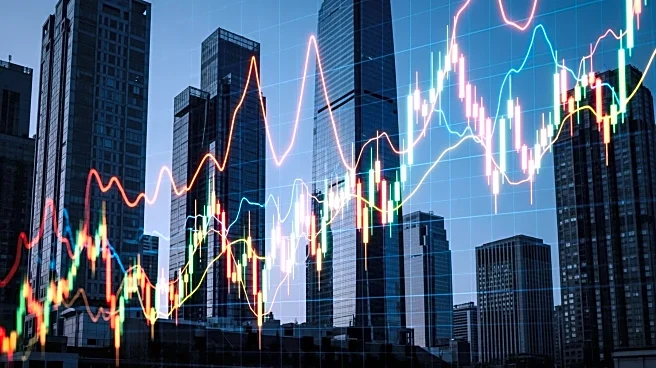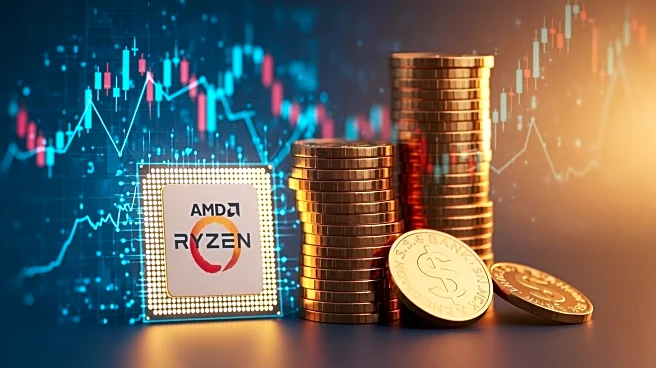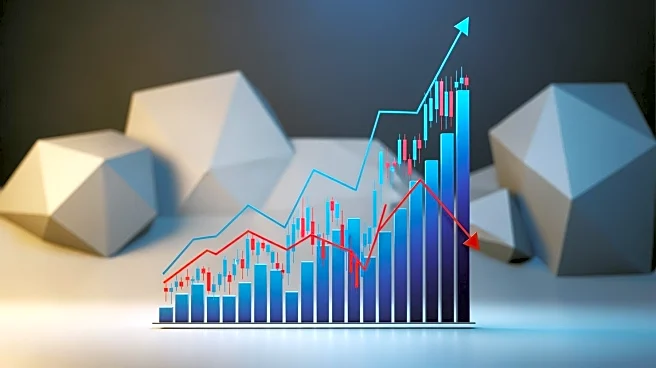What's Happening?
Investor sentiment in the U.S. stock market is currently mixed, with some analysts expressing optimism while others remain cautious. The S&P 500 has seen a 13% increase since the start of the year, although
recent market swings have raised concerns. Factors contributing to this volatility include rekindled U.S.-China trade tensions, regional bank losses due to alleged fraud, and fears of a potential bubble in the artificial intelligence sector. Despite these challenges, some analysts, such as those from Goldman Sachs and Wells Fargo, have raised their year-end forecasts for the S&P 500, citing solid U.S. economic growth and the Federal Reserve's lowering of borrowing costs.
Why It's Important?
The current market conditions reflect broader economic and geopolitical uncertainties that could impact various stakeholders. High stock valuations, driven by corporate profit improvements and AI enthusiasm, pose a risk of a sharp market correction. The resilience of the stock market, despite these risks, highlights the complex dynamics at play. Investors are particularly concerned about the potential for a bubble in the AI industry and the implications of ongoing trade tensions with China. These factors could influence investment strategies and economic policies in the coming months.
What's Next?
As the year progresses, investors will be closely watching for signs of economic stability or further volatility. The Federal Reserve's interest rate decisions, developments in U.S.-China trade relations, and the performance of the AI sector will be key areas of focus. Analysts will also monitor corporate earnings reports for indications of economic health. The potential for a market correction remains, but the timing and extent are uncertain.
Beyond the Headlines
The situation underscores the importance of balancing optimism with caution in investment strategies. The potential for a market correction, driven by high valuations and geopolitical risks, highlights the need for vigilance. The AI sector's rapid growth and its impact on market dynamics also warrant careful consideration, as it could have long-term implications for the economy.












